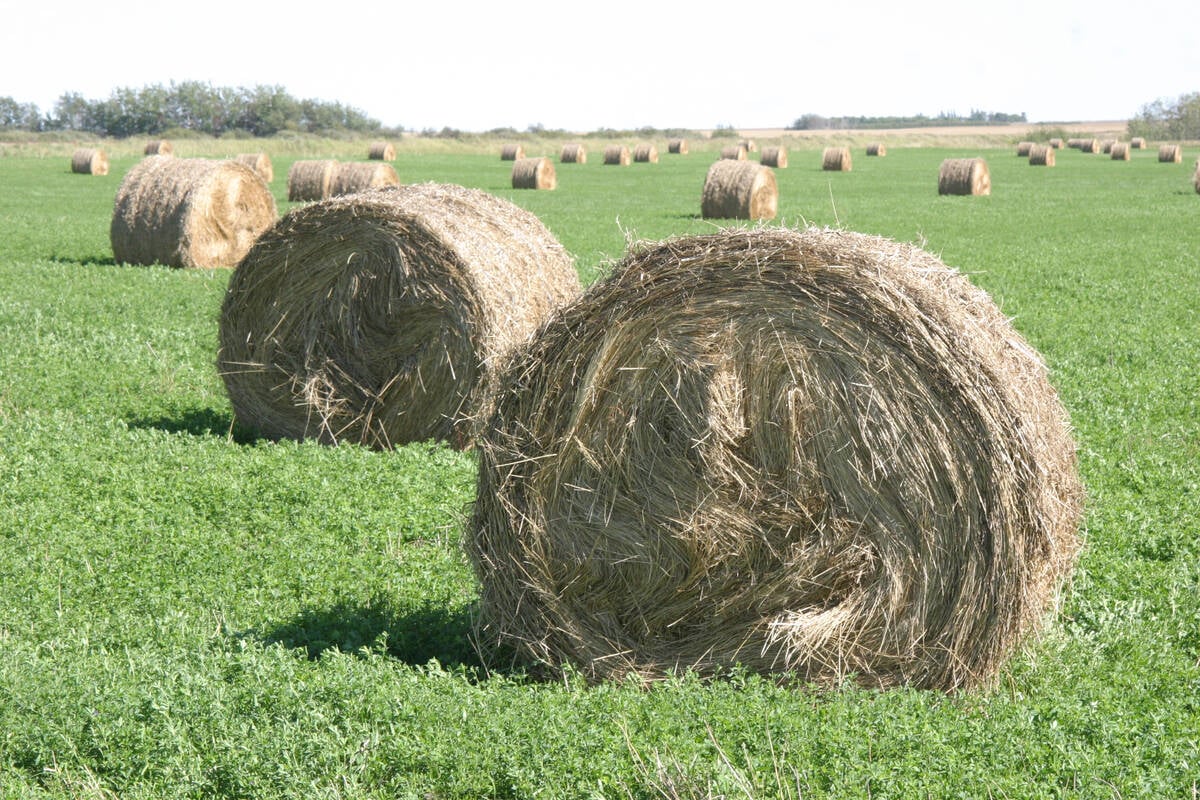This cattle market information is selected from the weekly report from Canfax, a division of the Canadian Cattlemen’s Association. More market information, analysis and statistics are available by becoming a Canfax subscriber by calling 403-275-5110 or at www.canfax.ca.
Fewer cattle went to market last week with the show list down almost 30 percent. That, and the strong U.S. cash and futures markets, lifted Canadian fed cattle prices.
American prices rose as carcass weights fell because of bad weather and poor corn quality. U.S. beef cutouts are also strong as packers limited their slaughter to drive beef prices higher.
Read Also

Breaking down successful winter feeding into six steps
It’s that time of year when it is important to start planning for a cow herd’s winter feeding program. Here are six steps I think are necessary to consider when getting your feed tested.
For the week, Canfax reported steers traded from $82.25-$85 per hundredweight and $140-$143.85 on the rail, and heifers traded from $83.25-$84.25 and $140-$143.85 on the rail.
Steers averaged $84.05, up $2.75 per cwt.. and heifers averaged $84.67, up $2.75.
The cash to cash basis strengthened to -$10.94 from -$12.44 last week.
Total weekly slaughter for Alberta to Feb. 20 was 42,223 head, down five percent from the week before but eight percent larger than last year.
Weekly fed exports to the United States to Feb. 13 were 16,966 head, up from 13,904 head the previous week and 13,002 last year.
D1, D2 cows rose $1 to average $48.20 per cwt., while D3 cow prices were 30 cents lower to average $41.55.
Rail grade cows were $91-$95, up from $90-$94 the week before.
Butcher bulls rose $1.80 to average $59.65.
Weekly nonfed exports to the U.S. to Feb. 13 fell five percent.
Many backgrounders have decided to sell feeders rather than retain ownership.
Auction volume rose 29 percent to 50,138 head, which was up three percent from last year.
Steers averaged $1.25 per cwt. higher and heifer prices rose $1.75.
Steers 300-400 pounds rose $1.60 and 400-500 lb. rose $2.35.
Steers 500-600 lb. climbed $1.20, while 600-700 lb. rose $3. Steers heavier than 700 lb. traded steady to firm.
Heifers 300-500 lb. jumped $3-$4 and 500-600 lb. rose $2.75. Heifers 600-700 lb. rose $1.80 and those heavier than 700 lb. were up 50-75 cents.
Weekly feeder exports to the U.S. to Feb. 13 totalled 4,395 head, up 57 percent from the week before but down 55 percent from last year.
More cattle will move to auction as spring approaches. Grass cattle demand is expected to be strong, and U.S. buyer interest could increase if their feedlots dry out.
Bred females will soon be dropping a fairly cheap calf on the ground and bids have risen as a result.
Bred cow prices rose $34.30 and bred heifer prices were $100 higher to average $917.
Herd dispersals are on most auction mart schedules and so volumes will increase.
Cow-calf pair sales were insufficient to report.
U.S. Choice cutouts climbed to $150.39 US, up $5.48 from the week before and $17.74 higher than last year.
Select cutouts closed at $149.75, up $5.98 from last week and $18.50 higher than a year ago.
Even with lighter carcasses, most are still grading 63 percent Choice, narrowing the Choice-Select spread.
The Canadian AAA cutout to Feb. 19 was $148.05 Cdn, down $1.24 from the previous week and $20.96 lower than this week last year.
The AA cutout was $147.77, down $1.37 from the previous week and $20.92 lower than a year ago.
The Montreal wholesale price for delivery this week rose $3 to $169-$171.
U.S. cash hog prices rose on stronger than expected pork prices and demand.
Futures hit an 18 month high. Strong margins allowed packers to bid up cash hog prices for the tight supply of market-ready pigs. Weight gain has slowed because of poor quality corn, related to the late and wet fall harvest.
Some traders also believe the hog count was too high in recent U.S. Department of Agriculture hogs and pigs reports.
Analysts worry that stronger than expected futures prices will discourage U.S. hog producers from continuing the sow liquidation.
Iowa-southern Minnesota cash hogs delivered to plants were $51.50 US per hundredweight Feb. 26, up from $49.50 Feb. 19.
The U.S. pork carcass cut-out value rose to $73.39 Feb. 26, up from $70.92 Feb. 19.
U.S. federal slaughter to Feb. 26 was estimated at 2.16 million, steady with the previous week. So far this year, slaughter is down 6.6 percent.
The Canadian Bison Association said grade A bulls younger than 30 months in the desirable weight range were steady at $2.35-$2.60 Cdn per pound hot hanging weight.
Grade A youthful heifers younger than 30 months in the desirable weight range were steady at $2.20-$2.45.
Older than 30 month bulls and heifers might be discounted.
Slaughter cows and bulls sold at $1.50 hot hanging weight.
Beaver Hill Auction in Tofield, Alta., reported 861 sheep and 142 goats traded Feb. 22. Sheep and goats were steady. Feeder lambs and breeding stock were higher.
Lambs lighter than 70 lb. were $161-$179 per cwt. Lambs 75-85 lb. were $155-$180, 86-105 lb. were $135-$168, and those heavier than 105 lb. were $132-$145.
Rams were $72-$89 per cwt. Ewe culls were $70-$83. Bred ewes were $89-$150.
Good kid goats heavier than 50 lb. were $160-$200 per cwt. Nannies were $65-$130 per cwt. Mature billies were $100-$130.
Ontario Stockyards sold 614 sheep and lambs and 71 goats Feb. 22. Lambs were steady to higher. Sheep rose and goats were steady.














